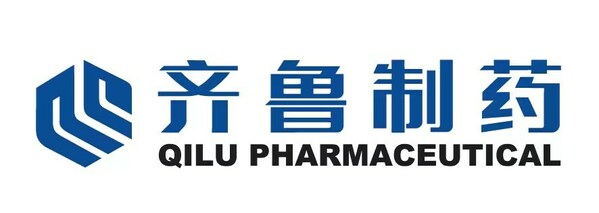 |
JINAN, China, March 15, 2024 /PRNewswire/ -- On 8 March local time, during the 25th European Society of Gynecological Oncology (ESGO) Conference (ESGO 2024) in Spain, Qilu Pharmaceutical unveiled the Phase II clinical trial results for iparomlimab and tuvonralimab (QL1706) in an oral presentation. This trial, known as DUBHE-C-206, recruited patients with recurrent or metastatic cervical cancer who failed first-line standard treatments. The findings were presented by Professor Jihong Liu from the Sun Yat-sen University Cancer Center in China.
Study Background and Design
Cervical cancer is one of the most prevalent malignancies among women and a leading cause of cancer-related death. For those who have failed the first-line standard therapy, the currently available treatment options are inadequate. The objective response rate (ORR) for pembrolizumab was 12.2%, with an ORR of 0% in the PD-L1-negative population[1]. Additionally, the median progression-free survival (PFS) and median overall survival (OS) were reported to be 2.1 months and 9.4 months, respectively. Similarly, cemiplimab showed an ORR of 16.4%, with a median PFS of 2.8 months and a median OS of 12.0 months[2]. This highlights the unmet need for effective and safe clinical treatments for patients with cervical cancer who failed first-line therapy. By targeting and inhibiting two immune checkpoint pathways (anti-PD-1 IgG4 and anti-CTLA-4 IgG1), Qilu Pharmaceutical's proprietary drug QL1706 has shown a favorable safety profile and preliminary efficacy in patients with cervical cancer in early studies. The DUBHE-C-206 study aimed to evaluate the efficacy and safety of QL1706 in patients with recurrent or metastatic cervical cancer.
This study was a multi-center, single-arm, open-label phase II clinical trial which enrolled patients with recurrent or metastatic cervical cancer who failed first-line platinum-based chemotherapy (with or without bevacizumab) and without prior immunotherapy. Participants received QL1706 at a dose of 5.0 mg/kg once every three weeks (Q3W). The primary endpoint of the trial was the ORR as assessed by an Independent Evaluation Committee (IRC). Secondary endpoints included the ORR as evaluated by investigators, duration of response (DoR) and disease control rate (DCR) as assessed by both IRC and investigators, PFS, 6-month and 12-month PFS rates, OS, 12-month OS rate, as well as safety, pharmacokinetics, and immunogenicity.
Study Results
As of April 28, 2023, the study had enrolled 148 patients with a median age of 53.0 years, including 132 (89.2%) diagnosed with squamous cell carcinoma. Of these participants, 109 (73.6%) had an Eastern Cooperative Oncology Group Performance Status (ECOG PS) score of 1. Additionally, 105 (70.9%) patients had a combined positive score (CPS) of ≥1, while 43 (29.1%) had a CPS of <1. Notably, 39.9% of the participants had been treated with bevacizumab, and 37.2% had received second-line and subsequent therapy. The median follow-up duration of the study was 11.0 months.
In terms of efficacy, the ORR as assessed by IRC was 33.8% (95% CI: 26.2%-42.0%), and the DCR reached 64.9% (95% CI: 56.6%-72.5%). The median PFS was 5.4 months (95% CI: 3.9-6.9), with 6-month and 12-month PFS rates of 45.0% and 16.1%, respectively. The median OS had not been reached, with 6-month and 12-month OS rates standing at 83.9% and 65.4%, respectively. In subgroup analyses, the ORR for patients with a CPS of ≥1 was 37.1%, compared to 25.6% for those with a CPS of <1. Furthermore, the ORR for patients who had previously received bevacizumab was 28.8%, whereas it was 37.1% for those who had not undergone such treatment.
Regarding safety, among all the participants, 104 (70.3%) experienced treatment-related adverse events (TRAEs), with the most common being hypothyroidism (20.9%) and hyperthyroidism (18.9%). TRAEs of grade 3 or higher were observed in 36 individuals (24.3%), with anemia (4.1%), increased gamma-glutamyl transferase (GGT) (2.7%), and increased lipase level (2.7%) being the most frequently reported. Three patients (2.0%) discontinued treatment due to TRAEs. There were no reported deaths resulting from TRAEs. In the study, 65 participants (43.9%) experienced immune-related adverse events (irAEs), with grade 3 or higher irAEs reported in 21 (14.2%).
In conclusion, QL1706 has shown promising efficacy and acceptable safety profile in patients with recurrent or metastatic cervical cancer who failed first-line standard therapy, regardless of their PD-L1 expression. This positions QL1706 as a more effective and safer therapeutic option for patients with cervical cancer whose disease progressed after first-line standard therapy. A phase III clinical trial is currently in progress, evaluating the use of QL1706 in combination with chemotherapy (with or without bevacizumab) as a first-line treatment option.
Prof. Liu from the Sun Yat-sen University Cancer Center commented, "The findings from the DUBHE-C-206 study offer new evidence to support the use of dual immunotherapy in the second- and late-line treatment of recurrent or metastatic advanced cervical cancer (ACC). They also affirm QL1706's potential as a promising new treatment option for ACC patients. The study's results have shown the efficacy benefits of QL1706 across the whole ACC patient population while demonstrating its considerable safety advantages. These findings suggest that QL1706 has the potential to significantly enhance the quality of life for patients and provide superior clinical benefits. We eagerly anticipate the outcomes of the Phase 3 trial for QL1706, which is now in progress to assess the efficacy and safety of QL1706 in combination with chemotherapy, with or without bevacizumab, as a first-line treatment for recurrent or metastatic ACC."
Professor Hanmei Lou from Zhejiang Cancer Hospital stated, "For ACC patients who have failed first-line therapy, the available treatment options are still limited and exhibit unsatisfactory efficacy, highlighting substantial unmet clinical needs. The efficacy and safety data from the DUBHE-C-206 study are promising. Compared with the previously reported combination therapy involving PD-1 and CTLA-4 inhibitors, QL1706 has demonstrated reduced toxicity and offers notable advantages in both safety and efficacy. This further supports the use of dual immunotherapy for the treatment of recurrent or metastatic ACC. Consequently, the data from the DUBHE-C-206 study holds significant clinical value and implications."
Ms Xiaoyan Kang, Executive Deputy General Manager of Qilu Pharmaceutical's Clinical Research & Development Center and Chief Medical Officer (CMO) for Oncology, explained, "QL1706 represents the world's first dual-functional MabPair antibody targeting both PD-1 and CTLA-4 pathways. Data from several clinical studies of this novel drug have been released. The inclusion of the latest clinical trial results in the oral presentation at the ESGO conference underscores the international academic community's interest in and recognition of the clinical potential of this novel product. Currently, multiple Phase III clinical trials involving QL1706 are in progress, covering various disease indications. Going forward, we plan to further accelerate the clinical development of QL1706 to ensure that this treatment can reach and benefit patients as soon as possible."
References:
1. J Clin Oncol. 2019;37(17):1470-1478.
2. N Engl J Med. 2022;386(6):544-555.






